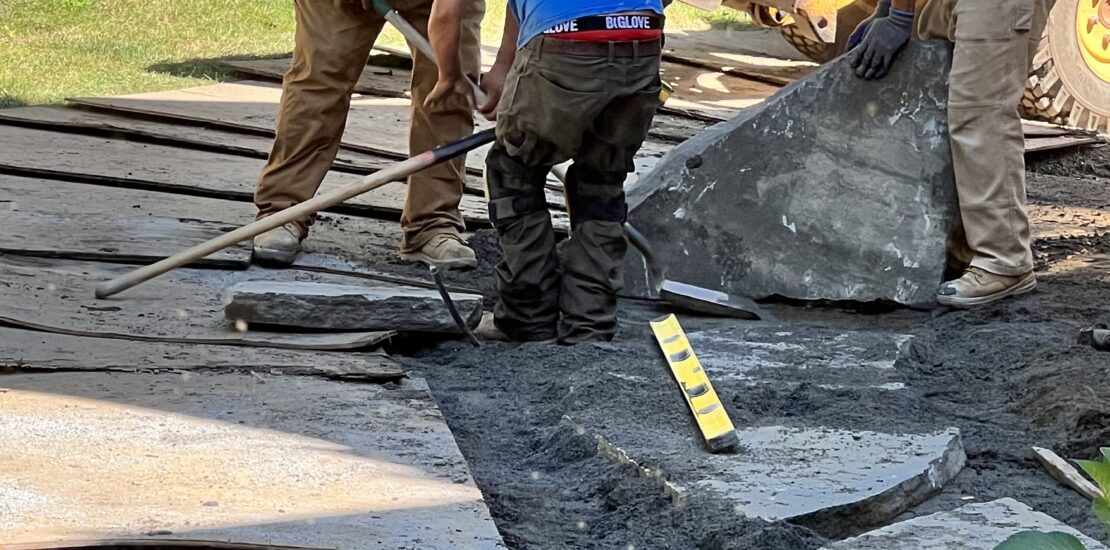- August 16, 2023
- Posted by: Dave Kurlan
- Category: Understanding the Sales Force

I was watching a crew install a walkway made up of very large stepping stones. The finished walkway would consist of around 30 such stones that measure an average of 3′ x 2′ x 4″ thick and will have grass around and between each step. It’s quite a process for the crew to complete this project. For example, they must:
- Pull up the old walkway which, in this case was pavers
- Install, level and compress new stone dust because the pavers were thicker than the stones
- Operate the tractor and bring one appropriately sized stone at a time to the walk site
- Place and position the stone 6-8 inches away from the prior stone
- Level the stone with stones that abut it
- Rinse and Repeat
- Install loam between and around each stone
- Cut and install sod around and between each of the stones.
- Clean and take pictures. This is their favorite part because it completes the work, puts the finishing touch on the walkway and they are proud and excited about what they built.
These 9 steps are pretty standard for a crew doing this type of installation. But what if they were salespeople and not a stone crew? If they were anything like the bottom 56% of all salespeople, who don’t effectively follow a sales process, they would begin with step 4 so that they could quickly get to steps 7-9. It would be the stone walkway equivalent of a salesperson starting with a presentation or demo.
Most salespeople start with a demo, or some kind of monologue about capabilities. If the stone crew began with putting the stones down, without properly preparing the site, the walk would get built but it wouldn’t look very good, it wouldn’t be level, the stones would wobble, it wouldn’t be safe, and you wouldn’t be very happy with your purchase.
Doesn’t the same thing happen when a salesperson begins with a demo? They completed the sales call, but they didn’t do discovery and failed to uncover any compelling reasons to buy, they didn’t thoroughly qualify the opportunity, they probably failed to reach the decision maker(s), and more importantly, the impression they left on their prospect was shaky (wobbly) because they failed to differentiate.
I understand that salespeople like presenting, they’re comfortable presenting, they’re best at presenting, it’s easy for them to present and it’s the path of least resistance for both salespeople and prospects. However, presenting is not selling, you’ll frequently come up empty, and other than feeling good from conducting a presentation, you’ll have nothing to leverage.
Worse, the thing that occurs post presentation is almost always a proposal. But what will you propose? You didn’t learn anything about their compelling reasons to buy, you didn’t get to the real problem they need to solve, you didn’t qualify at any level, so your proposal is a big guess about what they’ll buy, how much they’ll spend, what’s important to them, their timeline for buying and who the decision maker(s) are.
Watch my two-minute video on the subject.
